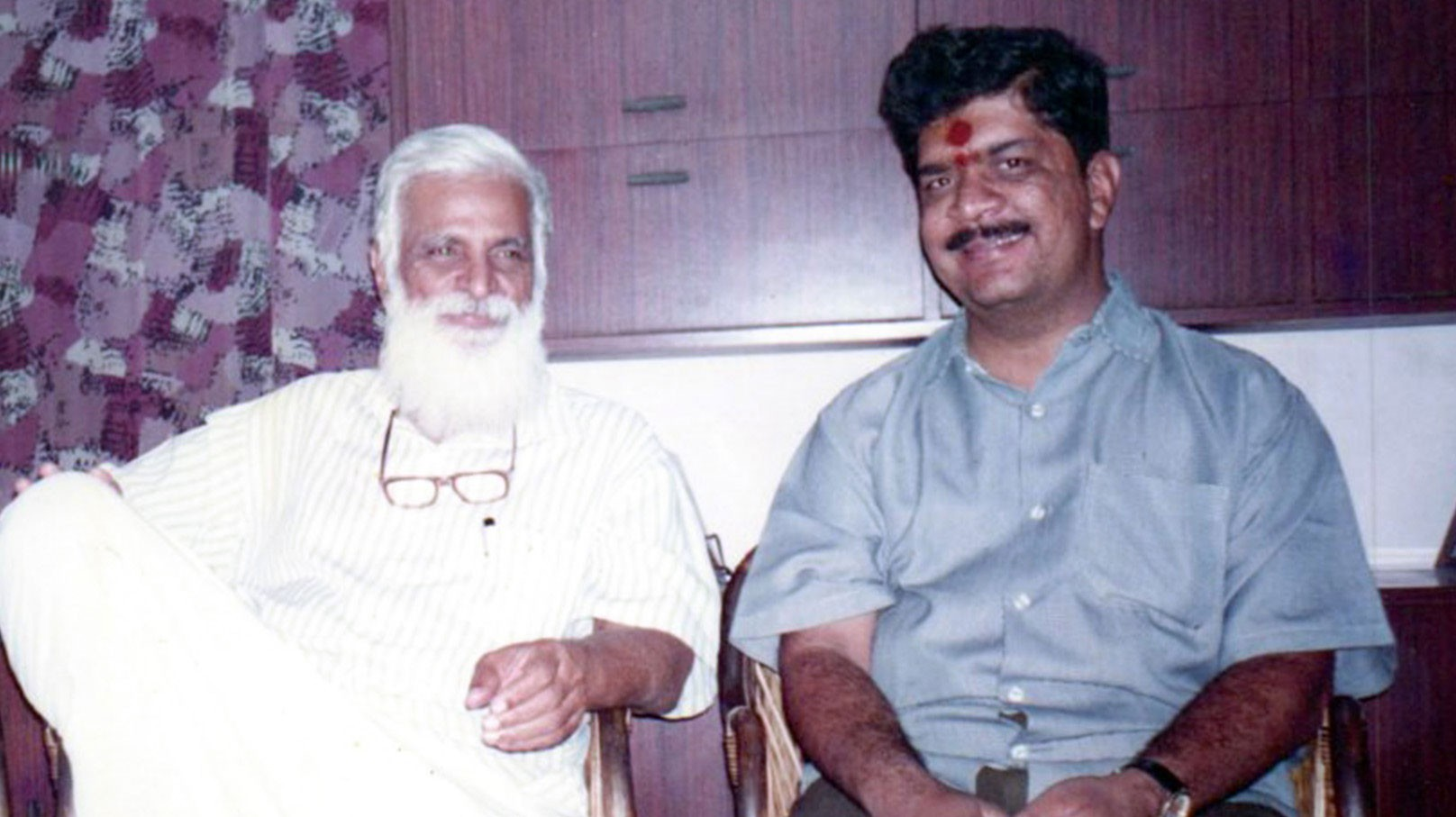- Edited

pṛthvī-salila-vahni-vāyvākāśa-gandha-rasa-rūpa-sparśaśabda-upastha-pāyu-pāda-pāṇi-vāk-ghrāṇa-jihvā-cakṣuḥ-tvakśrotra-manaḥ-buddhi- ahaṃkāra-prakṛti-puruṣa-niyati-kālarāga-vidyā-kalā-māyā-śuddhavidyā -īśvara-sadāśiva-śakti-śivātmaka ṣaṭ-triṃśat-tattva.
Each tattva is explained below -
sthūla-kāṭhinya-nānātva-pītavarṇa-caturaśrākārātmaka- gandha-tanmātrodbhūta-pṛthvī
The basic or lowermost tattva of all is Earth - pṛthvī (element) - Yellow in colour, represented as a square, with nature of gross, with solid structure, having variety, born out of the sense of smell.pravāha-āpya-drava-śvetavarṇa-vṛttākārātmaka-rasa tanmātrodbhūta-āpaḥ
The next tattva Water - jala or ap (element) - white in colour, represented as a circle, with nature of flowing, with fluid (flexible) structure, having wetting quality, born out of the sense of taste.dāhaka-pācaka-prakāśaka-raktavarṇa-ṣaṭkoṇākārātmaka-rūpa-tanmātrodbhūta-tejaḥ
The next tattva is Fire - tejas (element) - red in colour, represented as a hexagon, with nature of Heat, with brightness, causing digestion, born out of the sense of form.sañcāra-calana-śoṣaṇa-dhūmravarṇa-trikoṇākārātmaka sparśa-tanmātrodbhūta-vāyuḥ
The next tattva is air - vāyu (element) - grey in colour, represented as a triangle, with nature of guiding principle, with movement, having to dry up quality, born out of the sense of touch.avakāśa-achidrata-asparśa-nīlavarṇa-bindvākārātmaka śabda-tanmātrodbhūta-ākāśaḥ
The next tattva is Space ākāśa (element) - blue in colour, represented as a dot - bindu, with nature of fullness, with continuity having no gaps and unfelt presence quality, born out of the sense of sound.pṛthvī-bhūtasya-tanmātrātmaka-grhāṇa-kāraṇa-gandhaḥ
The next tattva is the sense of smell inherent in the Earth element, perception by smelling.āpo-bhūtasya-tanmātrātmaka-svādukāraṇa-rasaḥ
The next tattva is the sense of taste inherent in the water element, perception by tasting.tejaḥ-bhūtasya-tanmātrātmaka-mūrtīkāraṇa-rūpaḥ
The next tattva is the sense of form inherent in the fire element, perception by seeing.vāyu-bhūtasya-tanmātrātmaka-samparka-kāraṇa-sparśaḥ
The next tattva is the sense of touch inherent in the air element, perception by feel.ākāśa-bhūtasya-tanmātrātmaka-sarva-bhūtādhāram-śabdaḥ
The next tattva is the sense of sound inherent in space element, perception by inner understanding as to the base of all existence.ānanda-janaka-srṣtyādhāram-karmendriyam-upastha
The base of bliss which propagates creation is the genital organ.utsargātmaka-kriyāśaktyudbhūta-karmendriyam-pāyu
The rejection based active principle is the organ of action - anus.gamanāhnaka-kriyāśaktyudbhūta-karmendriyam-pāda
The organ of movement (active principle) are feet.ādeyātmaka-kriyāśaktyudbhūta-karmendriyam-pāṇi
The organ of exchange (active principle) is hand.parā-paśyanti-madhyamā-vaikharī-vacovṛtyadhiṣṭhita-kriyāśaktyudbhūta-karmendriyam-vāk
The organ to express sound energy as seen in the subtle, manifesting, and vocal sound (active principle) is ear.gandha-tanmātrā-grahaṇa-jñāna-śaktyudbhūta-jñānendriyam-ghrāṇa
The organ of receiving (knowledge) of smell is the nose.rasa-tanmātrā-grahaṇa-jñāna-śaktyudbhūta-jñānendriyam-jihvā
The organ of receiving (knowledge) of taste is tongue.rūpa-tanmātrā-grahaṇa-jñāna-śaktyudbhūta-jñānendriyam-cakṣuḥ
The organ of receiving (knowledge) of form is eye.sparśa-tanmātrā-grahaṇa-jñāna-śaktyudbhūta-jñānendriyam-tvak
The organ of receiving (knowledge) of touch is skin.śabda-tanmātrā-grahaṇa-jñāna-saktyudbhūta-jñānendriyam-śrotra
The organ of receiving (knowledge) of sound is ear.saṅkalpa-vikalpa-rūpa-taijasātmaka-tamo-guṇānvita-kriyāśakthi-pradhāna-antaḥkaraṇam-manaḥ
The cognition of all acts, their resolve and indifference caused by the inertia is mind.vimarśa-pracodita-sattva-guṇānvita-jñānaśakti-pradhāna antaḥkaraṇam-buddhiḥ
The reflection of all thoughts and its focus on action caused by the pureness and knowledge is buddhi.ahaṃ-iti-abhimāna-lakṣaṇa-rajoguṇānvita-icchāśakti pradhānāntaḥkaraṇaṃ-ahaṅkāra
The sense of awareness of existence caused by the activity state is ahaṃkara.sattva-rajastāmasātma-guṇa-traya-sāmyatā-prakṛti
The equality of the inertia, pureness, and activity is Prakṛti.aṇu-śarīra-kañcuka-pañcaka-āṇava-māyīka-karmika-malayuta- śivātmaka-puruṣa
The Lord Śiva covered with the limited body with three stains and five sheaths seen below is the puruṣa.ānandaśaktyātmaka-svātantryatva-saṅkucita-niyati
The contraction of the bliss which is the free will of Lord is called niyati.cicchaktyātmaka-nityatva-saṅkucita-kāla
The contraction of eternity which is the initial movement of Lord is Kāla.icchāśaktyātmaka-nitya-tṛptṛtva-saṅkucita-rāga
The contraction of an eternal fulfilled state which is the desire of Lord is Rāga.jñānaśaktyātmaka-sarvajñatā-saṅkucita-avidyā
The contraction of the all-knowing state which is the knowledge of Lord is Vidyā or also called as avidyā.kriyāśaktyātmaka-sarvakartṛ-pūrṇatva-saṅkucita-kalā
The contraction of fullness and all executing power which is the action of Lord is kalā.jagadīśvaryorbheda-dṛṣṭīkāraṇa-māyā
The state of differentiation of this Universe and the creator is Māyā.jagadīśvarayorabheda-bhāva-kriyāśaktyārvibhūtaṃ-śuddhavidyā
The removal of the above differentiated state by the active principle of Lord is called śuddha vidyā.idaṃ-ahaṃ-vṛtyakāra-mantreśvara-caitanyasthāna-vasita-jñānaśaktyārvibhūta-nikhila-tirodhānakartāraṃ-īśvara
This - I am - the knowledge aspect of Mantreśvara is the all concealing nature of Lord is expressed as Īśvaraahaṃ-idaṃ-vṛtyākāra-mantra-maheśvara-caitanyasthāna vasitaṃ-icchāśaktyārvibhūta-nikhilānugraha-nirataṃ-sadāśiva
I am - This - the Mantra Maheśvara due to the desire of Lord is expressed as Sadāśiva.svātantrākhya-svecchayā-svātmabhittau-parāhantārūpa-vimarśitaṃ-ānandaśaktyārvibhūta-prathama-sphuraṇaṃ-śakti
The free will of his own choice reflected in his own substratum due to the blissful nature of Lord which is the initial movement to create is Śakti.anuttara-murtim-nijecchayā-akhilamidam-ṣṛṣṭum-cicchaktyā-spanditam-śuddha-samvidātma-prakāśam-śiva
The Lord who created this universe from His desire and blissful nature of pure awareness is Śiva.
The organs denoted here are not physical ones per se, rather the principle behind that action. For example, if a person is blind, this cakṣu tattva will manifest in ear and nose, they will do the act of ‘seeing’. Similarly, the grasp of tattva is to be understood. The descent of Paraśiva into this Universe resulted in three levels of stains or ‘mala’. The five tattvas from śiva to śuddha vidyā are called śiva tattvas or śuddha tattvas with a stain called kārmika mala - or the stain in an action of descent. From Māyā to puruṣa, seven tattvas are called vidyā tattvas or miśra tattvas with a stain called māyika mala or the stain in differentiation. From prakṛti to pṛthvi, twenty-four tattvas are called ātma tattvas or aśuddha tattvas with a stain called āṇava mala or the stain in becoming a separate entity - individual.
Source: "Meditative Texts - Revised Thoughts on the Way" by Yogamba Sameta Atmanandanatha (Ramesh Kutticad)
Yogamba Sahita Atmanandantha (Ramesh Kutticad) is a Śrī Vidyā Guru from Chennai. He is associated with Guruji since 1996. Smt. and Sri Ramesh have painstakingly written the following scholarly, research. We're grateful to him for allowing us to make these articles available for the public.

